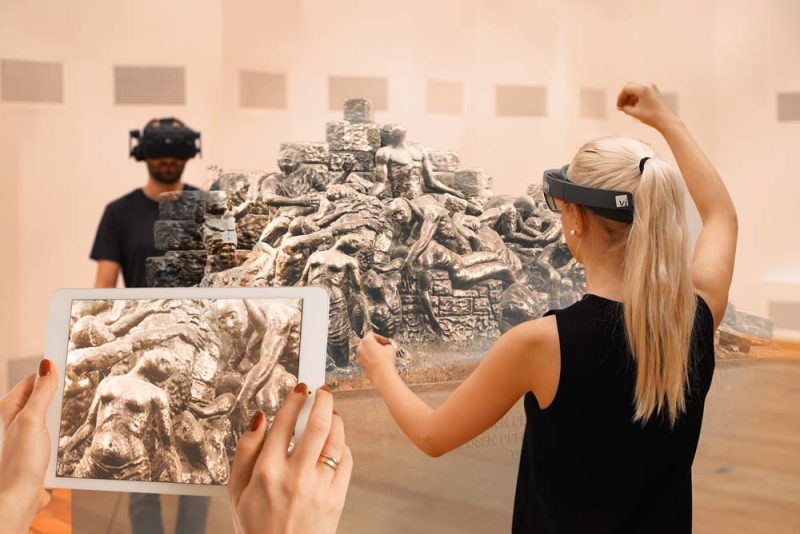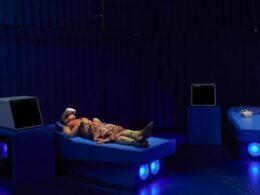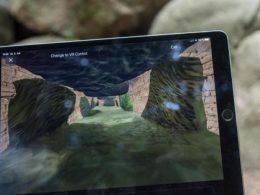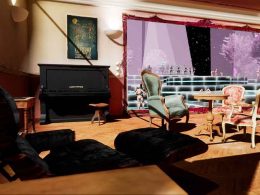Decades ago, the German-Jewish sculptor Benno Elkan (1877 to 1960) conceived the "Memorial to the Defenceless Victims of the Bombing War".". With modern AR technology, it will now be made visible in 2020.
Using black and white model photos, the project team digitally reconstructed the work, which is around nine metres wide and three metres high. Exactly 60 years after the death of the famous sculptor Benno Elkan (Wikipedia), a native of Dortmund, the city of Dortmund presents his memorial as "Germany's most modern monument" at the Museum of Art and Cultural History (MKK) and at the Dortmunder U as well as on the website for the Benno Elkan Project.
From now on, the virtual memorial will be located in the entrance area of the MKK. It is part of the permanent exhibition and can therefore be seen by all visitors free of charge. The purely digital work of art can be seen either through AR glasses, VR glasses or via smartphone and tablet AR.
At the Dortmunder U, the memorial appears as virtual art in public space: on a stone slab laid on the east side of the U, there is a QR code that can be used to place the virtual memorial directly in front of the Dortmunder U. The QR code can be downloaded here. A smartphone app for home use can be downloaded here.
Digital reconstruction based on old black-and-white photos
The twofold presentation of the memorial corresponds to Benno Elkan's wishes. He himself had designed two presentation options: A bronze version in a representative interior and one three times as large in stone on an open area. Virtually, both can now be realised exactly according to his size ideas.
"Elkan's earliest works can be seen at the Ostfriedhof; at the MKK and behind the Dortmunder U now his last and never completed one: in augmented reality, virtually in real space."says Dr Jens Stöcker, Director of the MKK.
Work on the virtual memorial began in 2016 after Elkan's granddaughter Beryn Hammil found photos and a letter in her grandfather's estate. The digital version was reconstructed from seven black-and-white photos of the plaster model. The sculptor had the idea for the memorial when he experienced the German bombing raids on London in exile.
Source: Press release City of Dortmund









